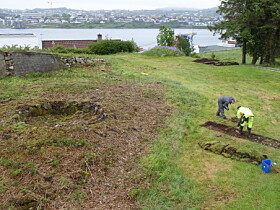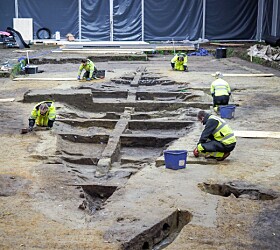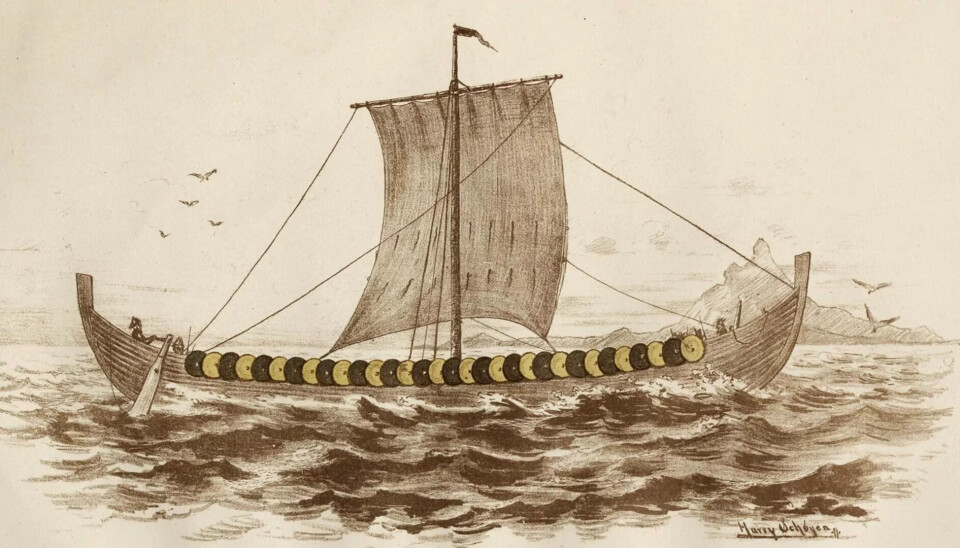
New studies are upending our ideas about Viking shields
The shields from the Gokstad Viking ship were not only made for burial rituals and as decorations. Evidence indicates that they were used in battle, according to a Danish archaeologist.
One of the best-preserved ship burial mounds of the Viking Age lies an hour and a half from Oslo, where the Gokstad ship was found.
At the beginning of the 10th century, the ship had sailed for the last time and was set ashore to become a burial place for a Viking.
Among the items accompanying the Viking to the grave were 64 yellow- and black-painted shields which, in their heyday, stood along the ship's sides as burial decorations – or so it was believed.
Archaeologist Rolf Fabricius Warming has been analysing the shields since 2019. He has found clear indications that they were not just decorative.
“We’ve believed that the Vikings produced thin, simple shields for ceremonial use like burials. But that doesn’t make sense given how they were constructed. We’re talking about complex weaponry technology craftsmanship,” says Warming.
He has found several tricks of the trade in the shield design that would give an advantage in battle.
Two tapering systems
One of the indicators for shields having more than merely a decorative purpose is that the wood is thinner at the outer edge of the shields.
The two tapering systems are “gentle tapering" that starts about six centimetres from the edge, and “radical tapering or chamfering,” where the wood is sanded just a couple of centimetres around the edge.
Archaeologists are still not entirely certain what the shields’ actual function was, but Warming believes the radical tapering would make it easier to attach rawhide to the edge of the shield, while the gentle tapering would make the shield lighter and easier to manoeuvre.
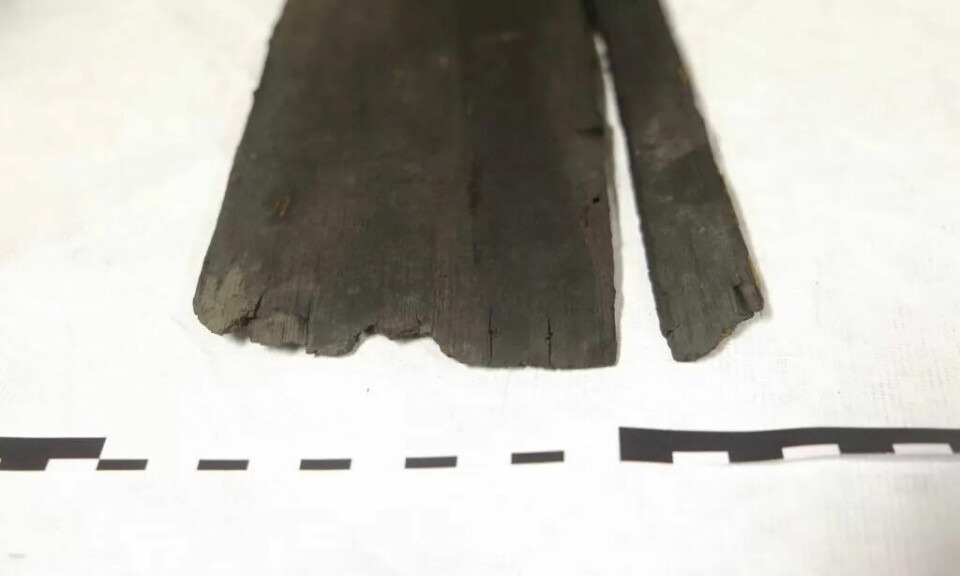
“Shields comprised a critical element of the Vikings' armour, and the tapering made them easier to control and use in combat – rather than just as a passive defence,” says Warming.
Raises new questions
As is so often the case with discoveries, this discovery now raises even more questions for the archaeologist. Some of the areas of interest that Warming hopes to investigate further are:
- Does each shield use only one tapering method, or do some use both gentle and radical tapering methods?
- Have the shields been tapered all the way around the shield or just in certain places?
- What can the answers to these two questions tell us about combat techniques and tactics?
Warming's scientific article, which has just been published in the journal Arms & Armour, recommends further analysis.
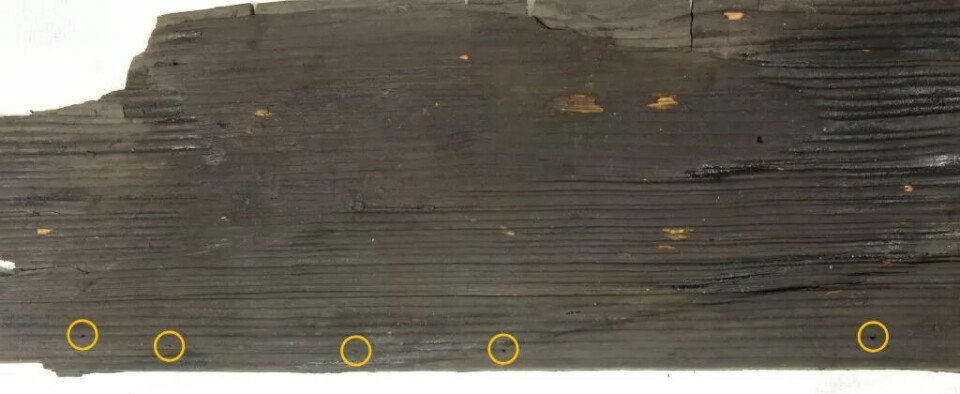
Protective clothing
A wooden shield struck by arrows, swords and axes cannot avoid getting some serious blows. And a single shield cannot sustain too many such blows before it becomes more hindrance than help.
However, if a shield maker makes small perforations and attaches rawhide to the shield, it can withstand much more force.
The perforations that Warming has found on the Gokstad shields are another clear sign that they were probably used for combat.
“With a rawhide covering, weapons would have a harder time penetrating the shields. This feature would make sense if the shields were used in battle, but it wouldn’t be necessary simply for ceremonial purposes,” he says.
Rawhide has many different qualities and comes from different animals, and it can be treated in different ways. But animal hide is an organic material that rots, so it is a rare find in archaeological artefacts that are over 1100 years old. The type of hide that might have protected the Gokstad shields is thus difficult to determine.
Although the archaeologists found some pieces of unknown organic material on the shields, it is impossible to know for sure what they are. Warming hopes that he and his colleagues will have the opportunity to analyse the organic material and figure out what it is.
Over the past few years, Warming and his colleagues have examined numerous other Viking shields. They have collaborated with the Trelleborg Museum in Denmark’s western Zealand to recreate the hide covering.
Old habits die slowly
The burial chamber in the Gokstad ship was excavated and examined for the first time in 1882 by the Norwegian archaeologist Nicolay Nicolaysen. Since then, it has been assumed that the shields were made for ceremonial use, as decoration for the burial chamber.
Warming has been sceptical about this interpretation, however.
“Archaeologists tend to explain what we don't understand by saying that artefacts are ceremonial,” he says.
“I’ve also looked at the dimensions of the shields and couldn’t see anything that suggested the Gokstad shields were special. But I’ve tried to be open to both interpretations.”
Warming's analysis of the shields is a bit like skiing off-piste – you can make some exciting discoveries, but you have to find the way yourself.
“Ploughing new ground is always difficult – this has been one of our biggest challenges – but it opens up new possibilities,” he says.
A welcome study
Ole Kastholm, who is an archaeologist at the Viking Ship Museum in Roskilde, Denmark, is surprised that the shields have not been analysed more closely before.
He sees Warming's study as a "welcome and important" supplement.
“Both the ship and the burial with all its artefacts are a crucial find from the Viking Age,” says Kastholm.
He finds it thought-provoking that the shields could have been more than just decorative "props."
Kastholm says that he would like to see an assessment done of whether the wood, which is an organic and changeable material, might have changed shape over time and affected the study's measurements and results.
He concurs that further studies could provide a deeper understanding of Viking culture.
“Not only are the shields quite a unique source of Viking Age weapon use and weapon technology,” says Kastholm, “but more knowledge about the Gokstad shields could also shed light on the overall questions of how we should interpret the burial gifts in the elite burials of the Viking Age, how the graves were built and what rituals and symbols the people at the time attached to them.
Learn more about the rituals
The Gokstad find consists of a burial mound, a ship, small boats, beds, sledges, tents, assorted other equipment and bones of horses, dogs and birds.
Kastholm points out that we can learn more about the burial culture of the Vikings by examining the objects that surround the burial sites.
“As we come to know more about the shields, we also gain better prerequisites for understanding the role they played in the burials. That way we learn a little more about the culture that surrounded that type of ritual,” he says.
Kastholm and Warming both point to the need to create a "completely basic and systematic presentation of the shields in their entirety, with drawings, photos, measurements and material analyses."
Most critical point still not investigated
As a rule, the shield boss tends to be the only part of Viking shields to survive, because the organic materials have disappeared. Warming therefore started by examining the available wood fragments from the shields in the Gokstad find.
However, the metal finds are not without significance.
The shield boss is a metal dome, placed centrally on the shield. It covers the hole in the wood where a warrior grasps the handle. This feature is an important source of knowledge about how the Vikings did battle.
“When we find notches or cuts on the shield bosses on what we thought were ceremonial shields, it’s another sign that they were used for combat. We still haven't analysed the marks. They might be able to tell us more about the Vikings' fighting techniques,” says Warming.
He hopes the article about the shields will lead to more research on the Vikings' most critical battle tool.
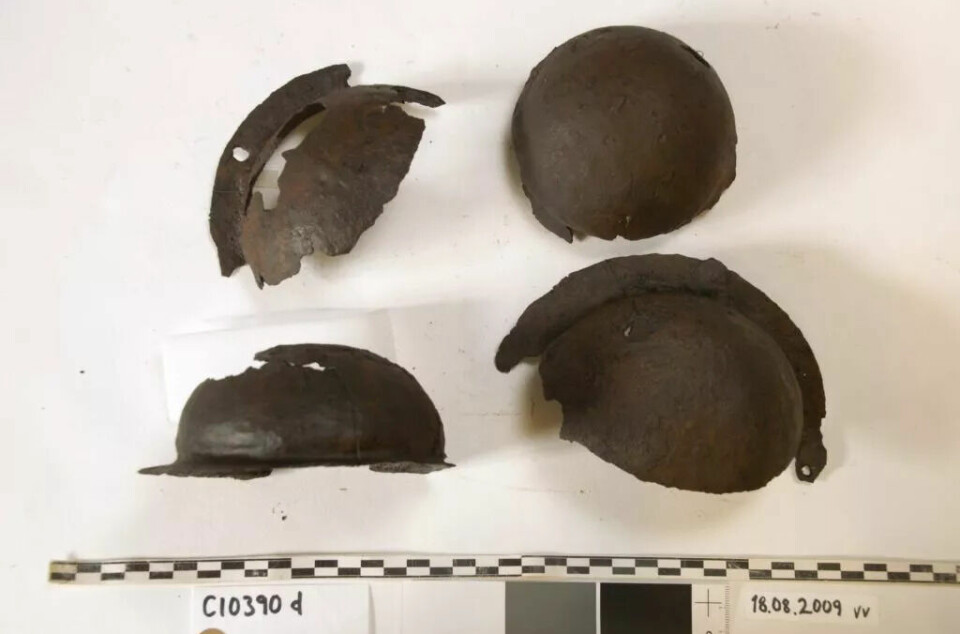
Colleague is ready for more challenges
One of Warming’s colleagues in this work is Anne-Christine Frank Larsen, who heads the Trelleborg Viking Fortress and National Museum of Denmark.
She says that the studies of the Gokstad shields are important for understanding the burial find, but also for being able to convey knowledge about the Vikings.
She considers these studies an example of how the subject of archaeology is constantly developing through ancient finds that challenge our understanding.
“Revisiting old excavations like Gokstad is really interesting, because we can use up-to-date knowledge to analyse and sometimes reinterpret old research results. That’s what makes working with the archaeological material so exciting,” says Larsen.
“The shields continue to provide us with information, and it will be wonderful to pass this new knowledge on. Maybe,” she suggests, “we can use the Trelleborg shield to inform us about the Gokstad discovery.”
This is only the first consideration on a long list of questions that could be interesting to investigate further.
- How was the Trelleborg shield painted? Red and white paint has been identified so far.
- How and how much was it painted?
- Can we come closer to explaining how the shields were used in combat situations?
Time will tell which questions are studied first.
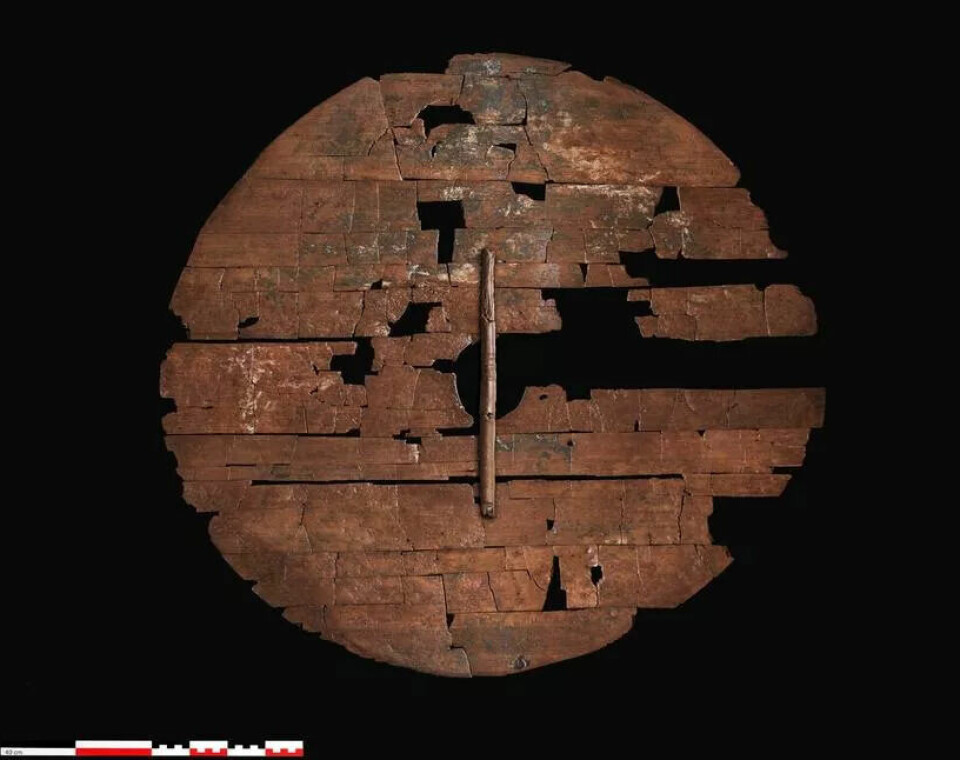
Translated by: Ingrid P. Nuse
Reference:
Rolf Fabricius Warming: The Viking Age shields from the ship burial at Gokstad: a re-examination of their construction and function. Arms & Armour, 2023. DOI: 10.1080/17416124.2023.2187199
© Videnskab.dk. Read the original version of this article in Danish at videnskab.dk







